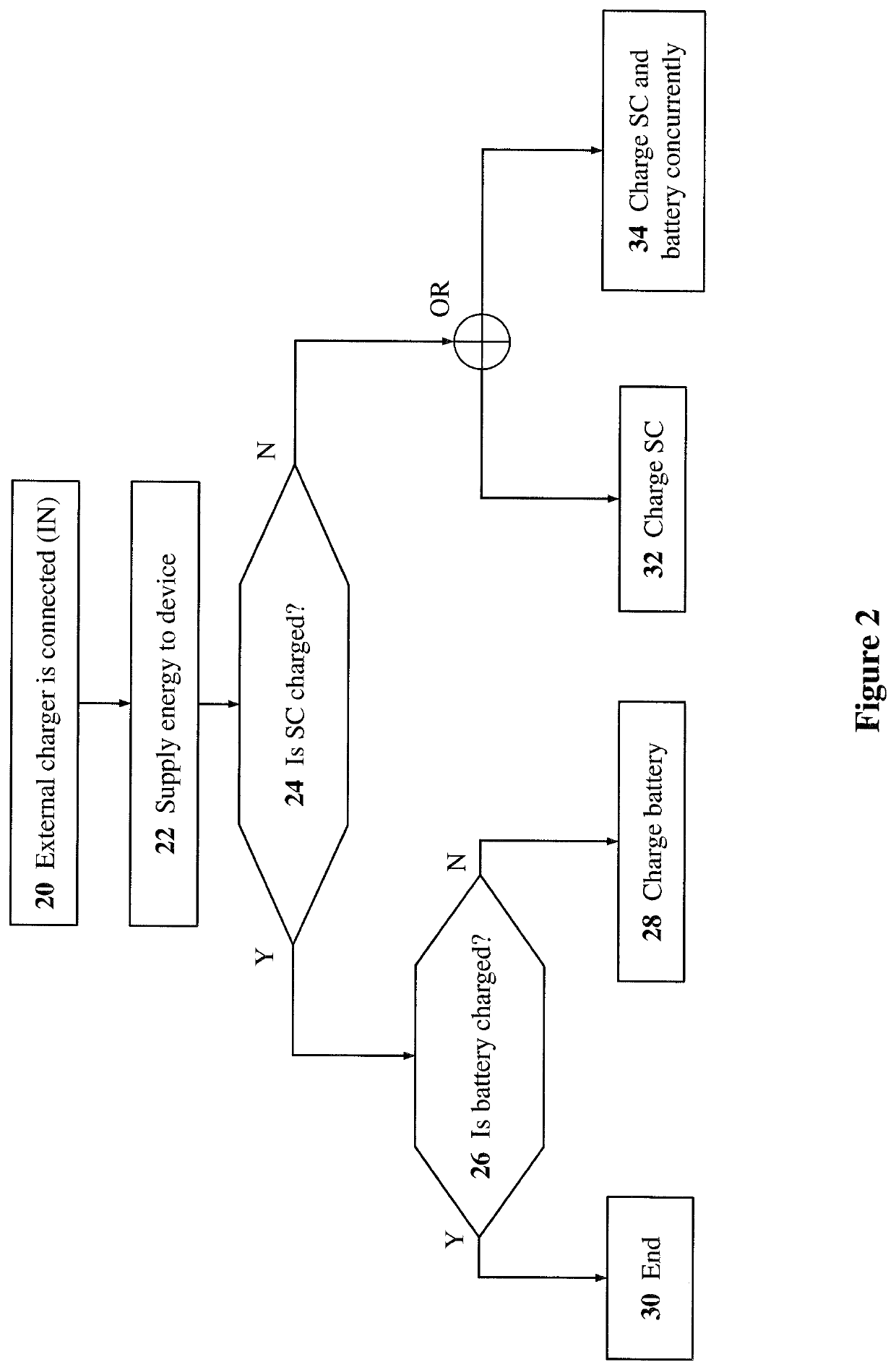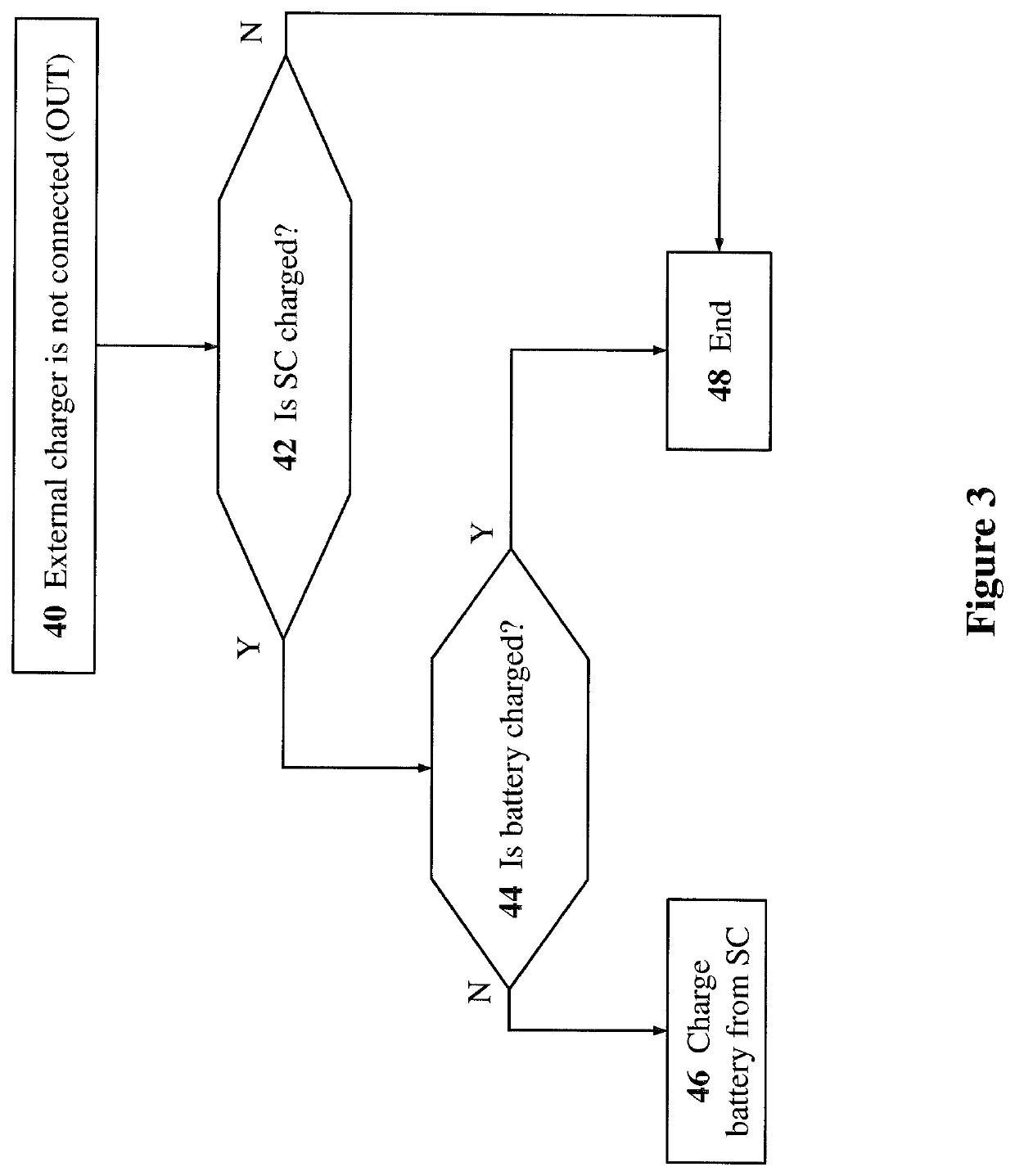Systems and methods for adaptive fast-charging for mobile devices and devices having sporadic power-source connection
a mobile device and power source technology, applied in battery overcharge protection, electric vehicles, indicating/monitoring circuits, etc., can solve the problems of slow process of battery charge and discharge, significant hampered further development, and inability for consumers to wait, so as to preserve the energy density of the battery and the effect of high system power
- Summary
- Abstract
- Description
- Claims
- Application Information
AI Technical Summary
Benefits of technology
Problems solved by technology
Method used
Image
Examples
Embodiment Construction
[0072]The present invention relates to systems and methods for adaptive fast-charging for mobile devices and devices having sporadic power-source connection. The principles and operation for providing such systems and methods, according to the present invention, may be better understood with reference to the accompanying description and the drawings.
[0073]Referring to the drawings, FIG. 1 is a simplified high-level schematic diagram of the device architecture for adaptive fast-charging for mobile devices and devices having sporadic power-source connection, according to preferred embodiments of the present invention. A device 2 (i.e., mobile device or a device having sporadic power-source connection) is shown having a SC charging controller 4, an SC 6, a battery charging controller 8, a rechargeable battery 10, and a device interface controller 12 operationally connected to each other. SC charging controller 4 and battery charging controller 8 each include a charge-sensing element (n...
PUM
 Login to View More
Login to View More Abstract
Description
Claims
Application Information
 Login to View More
Login to View More - R&D
- Intellectual Property
- Life Sciences
- Materials
- Tech Scout
- Unparalleled Data Quality
- Higher Quality Content
- 60% Fewer Hallucinations
Browse by: Latest US Patents, China's latest patents, Technical Efficacy Thesaurus, Application Domain, Technology Topic, Popular Technical Reports.
© 2025 PatSnap. All rights reserved.Legal|Privacy policy|Modern Slavery Act Transparency Statement|Sitemap|About US| Contact US: help@patsnap.com



